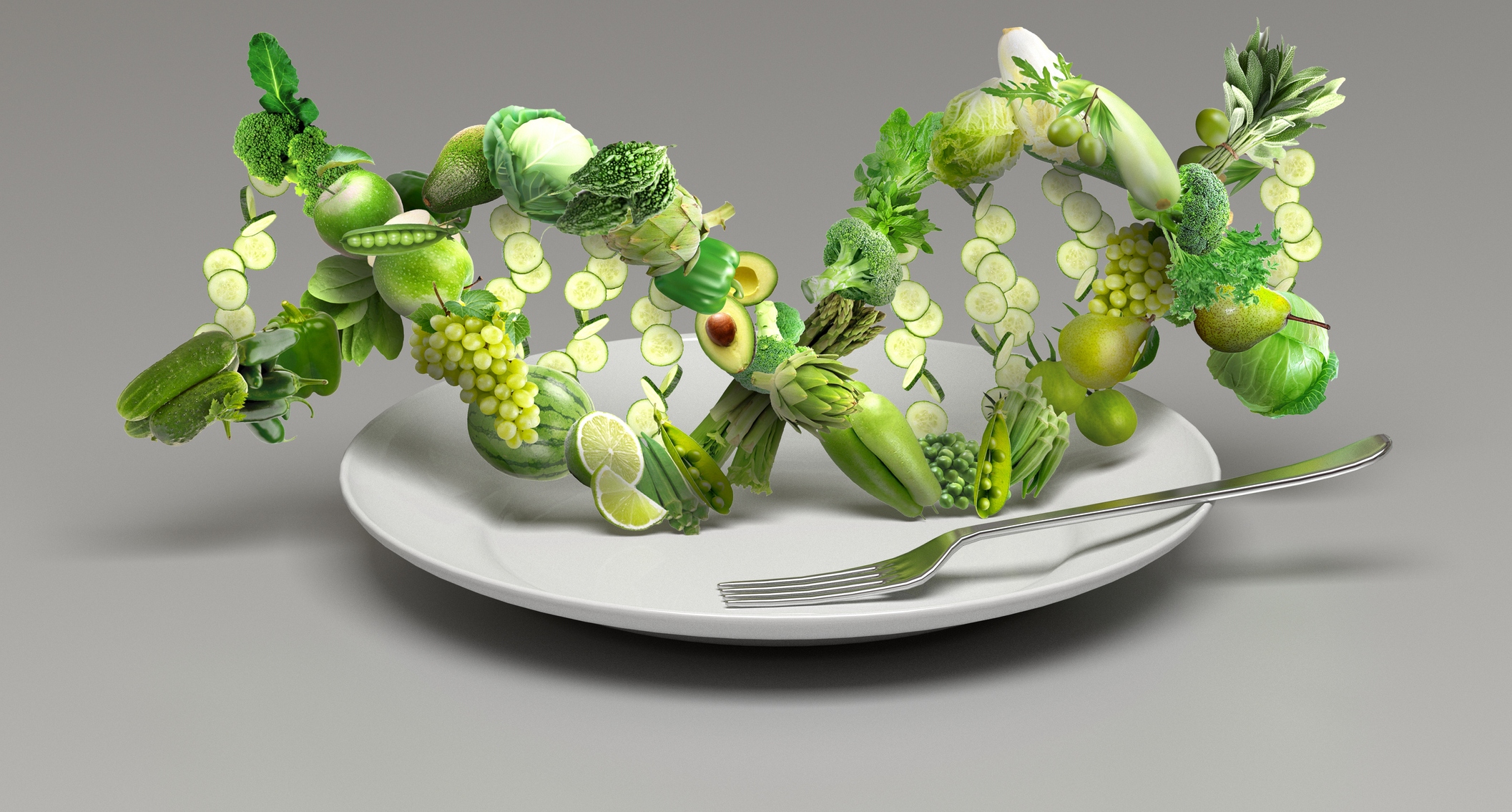The evolution of aroma: food and drink scents of the past, present and future

‘The taste and the sense of smell form but one sense, of which the mouth is the laboratory and the nose the chimney,’ wrote Jean-Anthelme Brillat-Savarin, the father of modern gastronomy, about aroma and flavour.
Our sense of smell is incredibly powerful; about 80% of what we taste is due to the sense of smell. Taste is composed by both the smell of the food before we eat and the aromatic molecules released in the mouth once we bite into it. Taste and smell are independent senses with their own receptor organs, but are closely entwined. Together with colour, texture and temperature, they give a a sense of what one’s eating; flavour is experienced when all of these senses are triggered at the same time.
Anyone with a cold and blocked nose knows that food tastes bland or is even completely tasteless when the sense of smell is reduced. Actually, what is really impacted is the flavour of the food, because only the taste, not the food odours are being detected.
Odours can be sniffed through the nose, which is referred to as orthonasal olfaction, or they can arrive at the back of the nose via the throat, which is called retronasal olfaction. Both methods influence flavour; when an odour is experienced together with a flavour, the two become connected, hence, smell influences taste and taste influences smell.
Aromas of the past
The practice of using fragrance, particularly essential oils (from herbs, plants and spices) to scent not only their surroundings but also food and drink dates back thousands of years.
Distilling fragrance from plants was practiced by the ancient Persians as far back as 3000 B.C. Around 1000 B.C. the Arabs discovered the process of extracting concentrated aromatic substances from plants by steaming them and condensing the vapour. The condensed liquid was collected where it separated into water and oil. The scented oil was then skimmed off and stored.
Arab cookery was – and still is – highly aromatic, using ingredients such as sandalwood, incense, musk, ambergris, saffron and rose to perfume dishes.
The strong, heady odour of musk, a wax produced by a gland secretion of the male musk deer, was usually mixed with ambergris, the intestinal secretion of the sperm whale. Found as waxy lumps floating on the sea or washed up on the shore, ambergris was valued for its sweet earthy fragrance.
Ancient Indian cuisine also understood the importance of smell in the enjoyment of food. Indian royalty dined in perfumed rooms on foods heavily scented with spices, musk, ambergris and flower waters, especially rosewater.
Ancient Romans used flower-scented water at banquets in between meals and sometimes released fragrances from ceiling sprinkler systems during sumptuous banquets to complement the subtly perfumed foods.
Fragrant dishes are still plentiful in the Mediterranean region – for example pastries soaked in honey and rosewater or orange flower water. The latter is a distillation from the small white waxy buds and flowers of the bitter orange which contain the essential oil neroli. It has an exquisitely sweet strong fragrance.
The practice of using essential oils and flower waters for fragrance and flavour passed into European cookery, with recipes for cakes, puddings, cordials, sauces, and more. A tourte filled with sugared vegetables and a sprinkling of orange flower water was described in ‘Le Menagier de Paris’, written in 1393. In medieval England, cooks used musk, ambergris, rosewater and exotic spices to bring luxurious fragrance and flavour to food for the wealthy nobility. Up to the 16th century, only a small group of essential oils were distilled such as frankincense, cinnamon and cedarwood. But in the 17th century, with advances in the craft of distillation, many other essential oils became available, such as angelica, chamomile and cloves.
Powdered red rose petals were a favourite method of colouring and flavouring savoury and sweet foods at medieval feasts and fragrant petals were often scattered over cherries in pies before the top crust was added. Red rose petals were preferred as they have a more intense bouquet, especially when dried. Elizabethan ladies steeped heavily scented rose petals in boiled water to make delightfully scented rosewater. Among its many uses, it was used to bind cake and was always included whenever almonds were ‘pounded’, or ground, as it prevented the almonds from ‘oiling’.
Ambergris, long a part of medieval Arab and Indian cuisines, was used in 17th century France, usually alongside musk, to perfume food and drinks. The vogue for ambergris also continued in 17th century England. Robert May, in The Accomplisht Cook (1660, 1665) and Hannah Woolley, in ‘The Queen-like Closet‘ (1670), gave recipes using ambergris in puddings, jellies and drinks.
The use of ambergris and musk gradually died out and they appear in few recipes written after 1700. As they fell out of food fashion, they were replaced by flavours such as vanilla.
The late 19th century saw the creation of new scents due to advances in chemistry. Originally these were used to complement natural ingredients in food and drinks, but they quickly replaced the use of essential oils as they were considerably cheaper to produce. Synthetic products were used in place of some scarce or expensive ingredients and their invention transformed the fragrance industry. Chemists started to manufacture some specific aroma molecules they had isolated in the distillation process, such as in 1874 when chemists Ferdinand Tiemann and Wilhelm Haarmann succeeded in synthesising vanillin from coniferyl alcohol, from spruce.
By the 1960s synthetic ingredients were being used significantly to recreate a wide variety of aromas. In the 1960s, instant powdered desserts in a range of flavours such as butterscotch and strawberry, designed to be mixed with milk, were introduced. Flavoured potato crisps such as cheese and onion and smoky bacon were invented and were immediately best sellers Today there are more than two thousand synthetic constituents in use. Indian and Chinese restaurants opened in many towns and the aromas of strong spicy foods became popular.
Aromas of the present
The irresistible aromas of baking bread, hot chocolate or fresh coffee wafting through supermarkets and cafes to entice customers have long been established. Some businesses also use a synthetic blend of smells in a diffusing machine to micro-mist their selected aroma around the premises. Research over the years has shown that customers are likely to stay longer and spend more money if the experience includes fragrance. Currently, the most popular aromas include vanilla, caramel, coffee, freshly baked bread, fish and chips and bacon.
Innovative chefs use aromas to invoke nostalgia. Heston Blumenthal used the scent of the sweetshop to remind diners of enjoyable memories from their childhood at his famous restaurant The Fat Duck at Bray. Diners toured a virtual sweetshop and experienced a special scent to mimic the aroma of a sweet shop. Blumenthal also created a two-flavoured cinnamon-vanilla ice cream. Served with two squeeze bottles, one containing sticks of cinnamon and the other a vanilla pod, the concept was that when one of the bottles was sniffed for a few seconds, the nose/brain would start to adapt to that aroma. When the ice cream is actually sampled, it should taste more strongly of the other flavour. When repeated by sniffing the other bottle first, then the apparent flavour of the ice cream may shift in the other direction.
Other advances include everything from aromatic cutlery and tableware through to the use of atomisers and dry ice. In recent years, a trend among experimental chefs around the world has been to serve some dishes on top of charred wood or on a bed of smoking straw. Others use fragranced dry ice or atomisers that spray scent – all designed to maximise the flavour of the food. Over the last few years, various companies have developed a range of aromatic cutlery – for example, forks and spoons scented with a range of aromas. Currently, the Aromafork (a fork with a capsule under the handle that emits a steady stream of scent) comes with 21 different flavours, including vanilla, chocolate and basil.
The rotary evaporator is a device that provides a means to extract natural aromas from almost any constituent. It can be used to convey aromas of ingredients that would otherwise be expensive to include, such as saffron. The gadget was used to create a chocolate dessert by Jordi Roca, pastry chef at Michelin-starred restaurant El Celler de Can Roca. He distilled cocoa bean essence from the rotary evaporator to create a completely white sorbet with a rich dark chocolate aroma.
Consumers judge many products by their aroma; fruit juice for example is expected to have a fresh aroma that corresponds to its taste. For that reason, scents are now incorporated into the caps of some sports drinks bottles, in the lids of coffee cups and into the packaging of other food and beverage products, although consumers may be unaware of this. American company Szent has developed water bottles featuring collars infused with natural oils such as pineapple, mint and tangerine. As you smell them, they transform plain drinking water into flavoured.
Sprayable scents, a blend of edible essential oils mixed with either alcohol or grapeseed oil are designed to be sprayed over food just before serving. Fragrances include baked apple with caramelised sugar, toasted coconut, marzipan, eggnog and piña colada. They’re used by chefs, bartenders and more recently in home kitchens to intensify the taste of food and drinks, particularly ice cream and cocktails.
In Singapore, an innovative bar and restaurant has patrons choosing their drink by scent instead of reading menus. Le Whaf, a gadget that transforms food flavours into inhalable vapours is the brainchild of David Edwards and Marc Bretillot. Cocktails are transformed into little clouds of fine vapour that are very low in alcohol content and sucked through a special straw.
A recent radical invention from leading global company Givaudan is the Aroma Kiosk , a digital unit with a touch screen that enables consumers to smell and rate different aromas The data is then translated into personalised flavour preferences using an AI algorithm. The kiosks can be used in supermarkets, department stores, universities and shopping centres to create customised surveys, collect consumer data and make product recommendations.
Aromas of the future
With HFSS rules due to become legislation in 2023, in the near future, healthier foods that contain lower amounts of sugar, salt, and fat will use aromas to compensate for the loss of taste. These will trick the brain into believing that some foods contain more fat, sugar, or salt than they actually do.
Several advances are being developed to introduce stronger or completely new smells into our meals. Scent-enabled plug-ins for mobile devices for instance, that could be used to enhance the orthonasal olfactory component of our multi-sensory food experiences in the years to come.
New technological advancements, such as the Internet of Senses, 5G and artificial intelligence, will see the realisation of digital smells, e-noses and innovative marketing through scent. When established, these technologies will heighten the way customers shop and engage with brands.
Companies will be able to create wide-ranging databases of smells that could be integrated into smartphones, laptops, and other devices to emit scents. The use of big data analytics may further allow mobile devices to record, store and use scent data collected about the user to identify customer behaviour and personalise future product recommendations.
Aroma tech company Aromyx is already working in this field. CEO Josh Silverman says: “To address the need for objective measurements of flavor, Aromyx has developed a biological platform that quantitatively and reproducibly measures taste and smell for the first time. Aromyx technology uses the receptors from the human nose and tongue to directly measure how a person would perceive a given product or ingredient. The platform allows companies to measure and optimize flavors and better understand the specific odor molecules that drive consumer preferences. Aromyx is working with companies to do everything from improving the flavor profile of sustainable products to direct product recommendations to consumers based on individual preferences.
“Flavor and fragrance preferences are highly individualized and most product developers struggle with understanding the high variability in their target consumer populations. This challenge is only made worse when the only data available to the developers is from subjective, noisy human panels. Aromyx data provides high quality, reproducible results that decrease R&D costs and time while increasing product success in the market. Even more importantly, Aromyx’s data also provides a tool and language for product manufacturers to actually communicate the flavor profiles of their products to consumers, building confidence and engagement with the brand.”
Digital signage or smart shelves in retail stores may give off smells that will prompt shoppers to buy products. Companies like Japanese based Aromajoin are making advancements in this area with products such as the ‘Aroma Shooter’ which connects to PCs and, smartphones. Olorama, a pioneering voice activated scent technology works with an app to activate scents manually or by voice recognition, whilst scientists at the Imagineering Institute in Malaysia announced in 2018 that they were working on a gadget that transmits electric charges to the brain via the nose, to trigger smells.
For Silverman, technology will open new doors as far as aromas are concerned.
“The odor space is very large, and developers and perfumists have been historically limited by combining a relatively small number of naturally-occurring ingredients. Furthermore, many of these ingredients have come from unsustainable sources and the available number of ingredients today is still decreasing. Just as Photoshop gave artists a tool to create new colors and subjects that are not limited by what occurs in nature, Aromyx technology allows perfumists and flavorists to move beyond today’s limitations and explore novel aromas that we’ve never experienced before.
“In addition, Aromyx technology is being used today to help consumers find the perfumes and aromas that they love quickly and efficiently (without having to smell hundreds of different products on a shelf), and these same tools can be used to help people recovering from COVID and other smell disorders. Finally, digitization of aroma will be a critical step in enabling e-commerce applications for a wide variety of products where online growth has stagnated in the absence of any way to communicate taste and smell online.”
The idea of being able to send a ‘digital smell’ over the internet or as part of virtual reality is fascinating. Electronic aromas are steadily making progress. Smell is one of the most potent senses, with the power to evoke treasured memories and emotions. The industry is on the cusp of powerful new methods to connect consumers and brands.









